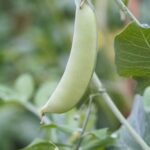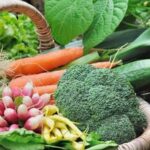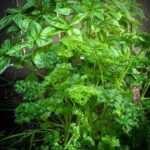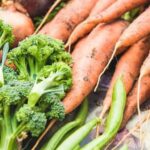If you have ever wondered, “is triple mix good for vegetable gardens?” then you are in the right place. Triple mix is a popular choice for many gardeners looking to improve the quality of their soil and maximize their crop yield. Composed of three main ingredients – topsoil, compost, and peat moss – triple mix is known for its ability to enrich and enhance the growing conditions for various vegetables.
Triple mix is a versatile option that provides essential nutrients and organic matter needed for healthy plant growth. With its balanced composition, it can improve soil structure, promote better drainage, and support optimal root development. These benefits make it an attractive choice for gardeners looking to create a fertile environment for a thriving vegetable garden.
In this article, we will explore the advantages of using triple mix in vegetable gardens, considerations to keep in mind when using it, how to prepare the soil with triple mix, the best vegetables to grow in triple mix soil, common mistakes to avoid, and tips for maintaining a healthy vegetable garden with triple mix.
Whether you are a seasoned gardener or just starting out, understanding the potential benefits and challenges of using triple mix can help you make informed decisions about your gardening practices.
Benefits of Using Triple Mix in Vegetable Gardens
Improves Soil Quality
Using triple mix in vegetable gardens can greatly improve the quality of the soil. This mixture is typically composed of one-third topsoil, one-third compost, and one-third peat moss or coconut coir. The organic matter in the compost and peat moss helps to create a loose and well-draining soil structure, which is ideal for growing vegetables. Additionally, the nutrients present in the compost can provide essential elements for healthy plant growth.
Enhances Nutrient Levels
Triple mix is an excellent way to enhance the nutrient levels in the soil. The combination of topsoil and compost provides a good balance of macro and micronutrients that are essential for plant growth. This can result in healthier plants with higher yields. Additionally, the peat moss or coconut coir component helps to retain moisture and nutrients in the soil, which is beneficial for vegetables that require consistent watering.
Reduces Need for Fertilizers
By using triple mix in vegetable gardens, gardeners may find that they need to use less chemical fertilizers. The presence of compost and organic matter in the triple mix can naturally enrich the soil, reducing the need for additional fertilizers.
However, it is important to regularly test your soil’s nutrient levels to ensure that your plants are receiving adequate nutrition throughout their growing season. Overall, using triple mix can contribute to a more sustainable and environmentally friendly approach to gardening by reducing synthetic inputs into the garden.
Considerations for Using Triple Mix in Vegetable Gardens
When considering using triple mix in your vegetable garden, there are a few important factors to take into account. Here are some considerations to keep in mind:
1. Soil pH Levels: Before using triple mix, it’s essential to test the pH levels of your existing soil. The ideal pH level for most vegetables is between 6. 0 and 7. 0. If the pH level is too high or too low, it can affect the availability of nutrients in the soil, which can impact the growth and health of your vegetable plants.
2. Drainage: One important consideration when using triple mix is drainage. While it’s a great option for improving soil structure and fertility, it’s crucial to ensure that your garden has proper drainage to prevent waterlogging, which can lead to root rot and other issues.
3. Nutrient Content: It’s also important to consider the nutrient content of your triple mix. While it can be rich in organic matter and beneficial microorganisms, you may still need to supplement with additional fertilizers depending on the specific needs of the vegetables you plan to grow.
By carefully considering these factors and taking appropriate steps to address any issues, you can effectively use triple mix in your vegetable garden to promote healthy plant growth and maximize your harvest.
How to Prepare the Soil With Triple Mix
Testing the Soil
Before adding triple mix to your vegetable garden, it’s important to test the soil to understand its composition and pH level. You can use a home soil test kit or send a sample to a professional soil testing lab. This will help you determine if the soil needs any amendments before adding triple mix.
Tilling and Mixing
Once you have tested the soil, it’s time to prepare it for the triple mix. Use a tiller or shovel to loosen the top few inches of soil, incorporating any necessary amendments based on your soil test results. Then, add the triple mix to the tilled soil according to the recommended ratio for your specific needs.
Adjusting Drainage
In some cases, you may need to adjust the drainage of your soil before adding triple mix. If your garden has poor drainage, consider incorporating organic matter such as compost into the mixture. This will help improve water retention and prevent waterlogged conditions that can be harmful to vegetable plants.
By properly preparing your soil with triple mix, you can create an optimal growing environment for your vegetable garden, setting it up for success throughout the growing season.
Best Vegetables to Grow in Triple Mix Soil
Triple mix soil is a popular choice for vegetable gardens due to its rich composition and ability to provide essential nutrients for plant growth. When using triple mix in vegetable gardens, there are certain vegetables that thrive particularly well in this type of soil.
Root vegetables such as carrots, radishes, and beets are excellent options for triple mix soil due to their need for loose, well-draining soil. These vegetables benefit from the nutrient-rich environment provided by triple mix, resulting in healthy and flavorful harvests.
Leafy greens like lettuce, spinach, and kale also do well in triple mix soil. The loose texture of the soil allows these plants to develop strong root systems while the nutrients help them grow lush and vibrant leaves. Additionally, vegetables like tomatoes, peppers, and cucumbers are ideal choices for triple mix soil as they require a fertile growing medium to produce bountiful crops.
In addition to these vegetables, herbs such as basil, parsley, and cilantro thrive in triple mix soil due to its ability to provide the necessary nutrients for robust growth. Ultimately, using triple mix in vegetable gardens can lead to successful cultivation of a wide variety of vegetables and herbs.
| Vegetable | Reasons for Thriving in Triple Mix Soil |
|---|---|
| Carrots | Need loose, well-draining soil; benefit from nutrient-rich environment |
| Lettuce | Thrive in loose soil with fertile growing medium; develop strong root systems |
| Tomatoes | Require fertile growing medium for bountiful crops; benefit from nutrient-rich environment |
| Basil | Thrive with necessary nutrients provided by triple mix; robust growth |
Common Mistakes to Avoid When Using Triple Mix in Vegetable Gardens
It’s important to avoid common mistakes when using triple mix in vegetable gardens to ensure the best results. One common mistake is not testing the soil before adding triple mix. Testing the soil can help determine its pH levels, nutrient content, and composition, which can all affect how much triple mix is actually needed. Without proper testing, you may end up adding too much or too little triple mix, leading to poor plant growth.
Another mistake to avoid is not mixing the triple mix thoroughly with the existing soil. Simply layering it on top of the existing soil can create a barrier that prevents water and nutrients from reaching plant roots. It’s essential to blend the triple mix evenly with the existing soil to create an optimal growing environment for vegetables.
Additionally, a common mistake is not considering drainage when using triple mix in vegetable gardens. While triple mix can improve soil structure and drainage in many cases, it may exacerbate drainage issues if used in an area with poor natural drainage. This can lead to waterlogged soil and root rot for vegetable plants.
Lastly, over-fertilizing is another common mistake when using triple mix in vegetable gardens. Triple mix already contains some nutrients, so adding additional fertilizer without proper knowledge or testing can result in nutrient imbalances that harm plants rather than help them.
| Common Mistakes | Impact |
|---|---|
| Not testing the soil before adding triple mix | Poor plant growth due to misjudging nutrient needs |
| Not mixing triple mix thoroughly with existing soil | Inadequate water and nutrient distribution to plant roots |
| Not considering drainage issues | Potential waterlogged soil and root rot for plants |
| Over-fertilizing with additional nutrients | Nutrient imbalances that harm plants instead of helping them |
Tips for Maintaining a Healthy Vegetable Garden With Triple Mix
Maintaining a healthy vegetable garden with triple mix soil requires regular care and attention to ensure the best possible growing conditions for your plants. Here are some tips to help you maintain a healthy vegetable garden with triple mix:
1. Regular watering: It’s important to water your vegetable garden regularly, especially during hot and dry periods. Make sure the soil is evenly moist but not waterlogged, as overwatering can lead to root rot and other issues.
2. Mulching: Applying mulch to the soil surface can help retain moisture, regulate temperature, and suppress weed growth. Organic materials such as straw, wood chips, or compost can be used as mulch in your vegetable garden.
3. Fertilizing: While triple mix soil provides a rich base for growing vegetables, it’s important to supplement with fertilizer as needed. Consider using natural or organic fertilizers to avoid chemical buildup in the soil.
4. Pruning and weeding: Regularly remove weeds from your vegetable garden to reduce competition for nutrients and minimize the risk of disease. Additionally, prune any damaged or overcrowded plants to promote healthy growth.
5. Pests and diseases: Keep an eye out for signs of pests or diseases in your vegetable garden. Consider using natural pest control methods such as companion planting or introducing beneficial insects to manage pest populations.
By following these tips, you can maintain a healthy vegetable garden with triple mix soil and enjoy a bountiful harvest of delicious homegrown vegetables. Remember that each plant may have specific needs so always be on top of researching caring tips unique for different veggies grown on triple mix.
Conclusion
In conclusion, triple mix can be a great addition to vegetable gardens due to its nutrient-rich composition and ability to improve soil structure. The combination of topsoil, compost, and peat moss provides the essential elements needed for healthy plant growth, making it a popular choice for gardeners looking to enhance their vegetable crops. When used correctly, triple mix can lead to bountiful harvests and thriving plants.
It is important to consider the specific needs of your vegetable garden when deciding whether triple mix is the right choice for you. Different vegetables have different soil requirements, so it is crucial to research which plants will thrive in this type of soil. Additionally, taking into account the climate and weather conditions in your region can also influence the effectiveness of using triple mix in your garden.
Overall, when preparing and maintaining a vegetable garden with triple mix, it is important to remember that proper soil preparation and ongoing care are key factors in ensuring success. Regular watering, monitoring for pests and diseases, and replenishing nutrients as needed are all important practices to keep your vegetable garden healthy when using triple mix. With the right knowledge and attention to detail, triple mix can indeed be a beneficial asset for growing a flourishing vegetable garden.
Frequently Asked Questions
Is Triple Mix Good for Vegetables?
Triple mix can be good for vegetables, as it typically includes a blend of topsoil, compost, and peat moss. This combination provides essential nutrients, drainage, and moisture retention that can benefit vegetable plants. However, it’s important to consider the specific needs of the vegetables being grown and potentially adjust the mix accordingly.
Is Triple Mix Good for Tomatoes?
Triple mix can be beneficial for tomatoes, as the nutrient-rich compost and topsoil in the mix can provide a good foundation for healthy tomato plants. The peat moss component also helps with moisture retention, which is particularly important for tomatoes.
However, adding additional organic matter or fertilizer may still be necessary depending on the specific conditions of the soil and the needs of the tomato plants.
What Is the Best Soil Combination for a Vegetable Garden?
The best soil combination for a vegetable garden often includes a mixture of topsoil, compost, and peat moss – similar to triple mix. This combination can provide essential nutrients, proper drainage, and adequate moisture retention for a variety of vegetable plants.
It’s important to assess the specific needs of different vegetables and adjust the soil mixture accordingly to ensure optimal growing conditions. Regular testing and amending of soil may also be necessary over time to maintain its quality for vegetable cultivation.

If you’re looking to get into vegetable gardening, or are just looking for some tips on how to make your current garden better, then you’ve come to the right place! My name is Ethel and I have been gardening for years. In this blog, I’m going to share with you some of my best tips on how to create a successful vegetable garden.





